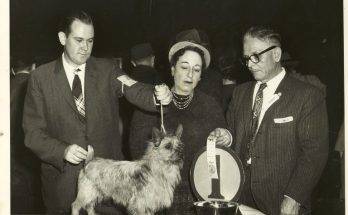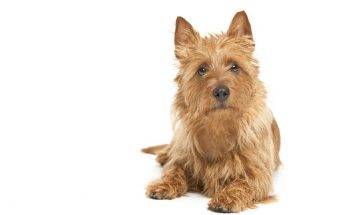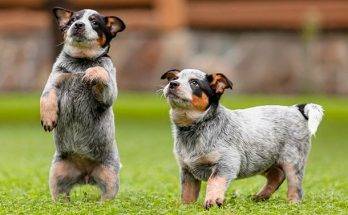The Australian Cattle Dog, also known as the Blue Heeler or Queensland Heeler, is a breed renowned for its agility, intelligence, and work ethic. If you’re considering adding one of these remarkable canines to your family, it’s essential to understand their lifespan and what factors can influence it. In this article, we explore the Australian Cattle Dog lifespan in detail, shedding light on various aspects that contribute to their longevity.
What is the Average Lifespan of an Australian Cattle Dog?
The average lifespan of an Australian Cattle Dog typically ranges between 12 to 15 years. However, it’s important to note that individual dogs may exceed or fall short of this range due to several factors, including genetics, lifestyle, healthcare, and overall well-being.

Factors Influencing Australian Cattle Dog Lifespan
1. Genetics and Breed Lineage
Genetic factors play a significant role in determining the lifespan of Australian Cattle Dogs. Responsible breeders strive to produce healthier offspring by selecting dogs with favorable genetic traits and conducting thorough health screenings. By opting for a reputable breeder, you increase the chances of getting a puppy with a robust genetic background, potentially leading to a longer lifespan.
2. Diet and Nutrition
Proper nutrition is crucial for the overall health and well-being of Australian Cattle Dogs. Feeding them a well-balanced diet that meets their nutritional requirements promotes longevity and helps prevent obesity-related health issues. Consult with your veterinarian to determine the most suitable diet plan for your furry friend, taking into account their age, activity level, and any specific dietary needs they may have.
3. Exercise and Mental Stimulation
Australian Cattle Dogs are highly energetic and intelligent beings. Regular exercise and mental stimulation are vital for keeping them both physically and mentally fit, contributing to their longevity. Engaging in activities such as obedience training, agility courses, and interactive play sessions can help burn off excess energy and prevent boredom-related behaviors that may negatively impact their lifespan.
4. Preventive Healthcare
Routine veterinary care, including vaccinations, parasite control, and regular check-ups, is essential for ensuring the well-being of your Australian Cattle Dog. By staying up to date with preventive healthcare measures, you can help detect and address potential health concerns early on, ultimately extending their lifespan. Additionally, dental care is often overlooked but critical for maintaining overall health, as poor oral hygiene can lead to various health issues in dogs.
Common Health Issues Affecting Australian Cattle Dogs

While Australian Cattle Dogs are generally robust and healthy, they can still be prone to certain health conditions. Familiarizing yourself with these common ailments can help you provide appropriate care and recognize potential warning signs. Some prevalent health issues in Australian Cattle Dogs include:
1. Hip and Elbow Dysplasia
Hip and elbow dysplasia are developmental abnormalities that affect the joints, leading to pain and mobility issues. Regular exercise, a balanced diet, and maintaining a healthy weight can reduce the risk and severity of these conditions.
2. Progressive Retinal Atrophy (PRA)
Progressive retinal atrophy is an inherited eye disease that causes gradual vision loss and can eventually lead to blindness. Regular eye examinations by a veterinary ophthalmologist can aid in early detection and management of PRA.
3. Deafness
Deafness can occur in some Australian Cattle Dogs, particularly those with a predominantly white coat color. While it may present challenges, deaf dogs can lead fulfilling lives with proper training and accommodations.
4. Canine Hyperuricosuria (HUU)
Canine hyperuricosuria is a hereditary condition that affects the urinary system, leading to the formation of bladder and kidney stones. A balanced diet and access to plenty of fresh water can help manage this condition.
Tips for Promoting a Long and Healthy Life

To ensure your Australian Cattle Dog enjoys a long and fulfilling life, consider implementing the following tips:
- Provide a balanced and nutritious diet tailored to their specific needs.
- Engage in regular physical exercise and mental stimulation activities.
- Maintain routine veterinary visits for preventive care and early disease detection.
- Keep up with vaccinations, parasite control, and dental care.
- Monitor their weight and body condition to prevent obesity-related health issues.
- Create a safe and stimulating environment that minimizes potential hazards.
- Offer plenty of love, attention, and social interaction to support their mental well-being.
In Conclusion
The Australian Cattle Dog is an incredible breed full of energy, intelligence, and loyalty. With proper care, nutrition, exercise, and healthcare, you can significantly contribute to their longevity and overall quality of life. By understanding the factors that influence their lifespan and being proactive in promoting their well-being, you can enjoy many cherished years with your faithful companion.
## Frequently Asked Questions about Australian Cattle Dog Lifespan
1. How can I ensure my Australian Cattle Dog lives a long and healthy life?
To promote a long and healthy life for your Australian Cattle Dog, it’s important to provide them with a balanced diet, regular exercise, mental stimulation, routine veterinary care, and a safe environment. Additionally, maintaining their overall well-being through preventive healthcare measures, such as vaccinations, parasite control, and dental care, is crucial.
2. Are there any specific dietary requirements for Australian Cattle Dogs?
Australian Cattle Dogs have unique dietary needs that should be addressed for optimal health. It’s recommended to feed them high-quality dog food that contains a balanced blend of protein, fats, carbohydrates, vitamins, and minerals. Consult with your veterinarian to determine the most appropriate diet plan based on your dog’s age, activity level, and any specific dietary considerations.
3. How much exercise do Australian Cattle Dogs need?
Australian Cattle Dogs are known for their high energy levels and require regular exercise to remain physically and mentally stimulated. Aim for at least 60 minutes of daily exercise, which can include activities like brisk walks, jogging, playing fetch, or participating in agility training. Providing them with outlets for their energy helps prevent behavioral issues and promotes a longer and healthier life.
4. What signs should I look out for that may indicate health problems in my Australian Cattle Dog?
It’s essential to monitor your Australian Cattle Dog for any signs of potential health problems. Some common indicators include changes in appetite, weight loss or gain, lethargy, abnormal bowel movements, excessive thirst, coughing, difficulty breathing, limping, and changes in behavior. If you notice any unusual symptoms, it’s best to consult with your veterinarian for a proper diagnosis and treatment.
5. Can Australian Cattle Dogs live in apartments or small living spaces?
While Australian Cattle Dogs are active and require ample exercise, they can adapt to living in apartments or small living spaces. However, it’s important to provide them with regular exercise opportunities outside of the home, such as trips to dog parks or long walks. Mental stimulation through interactive play and training sessions is equally crucial for their well-being.
6. Are there any specific age-related health concerns that Australian Cattle Dogs may face?
As Australian Cattle Dogs age, they may become more prone to certain health conditions, such as arthritis, vision and hearing loss, and dental issues. Regular veterinary check-ups and monitoring their mobility, senses, and oral hygiene can help detect and manage age-related health concerns effectively.
7. Can Australian Cattle Dogs live with other pets and children?
Australian Cattle Dogs can generally get along well with other pets and children if properly socialized from an early age. It’s important to introduce them gradually and supervise interactions to ensure everyone’s safety. Early socialization, positive reinforcement training, and teaching children how to interact respectfully with dogs are key factors in creating harmonious relationships.
By following these guidelines and being proactive in caring for your Australian Cattle Dog’s well-being, you can help maximize their lifespan and enjoy a wonderful bond with your four-legged friend for many years to come.




